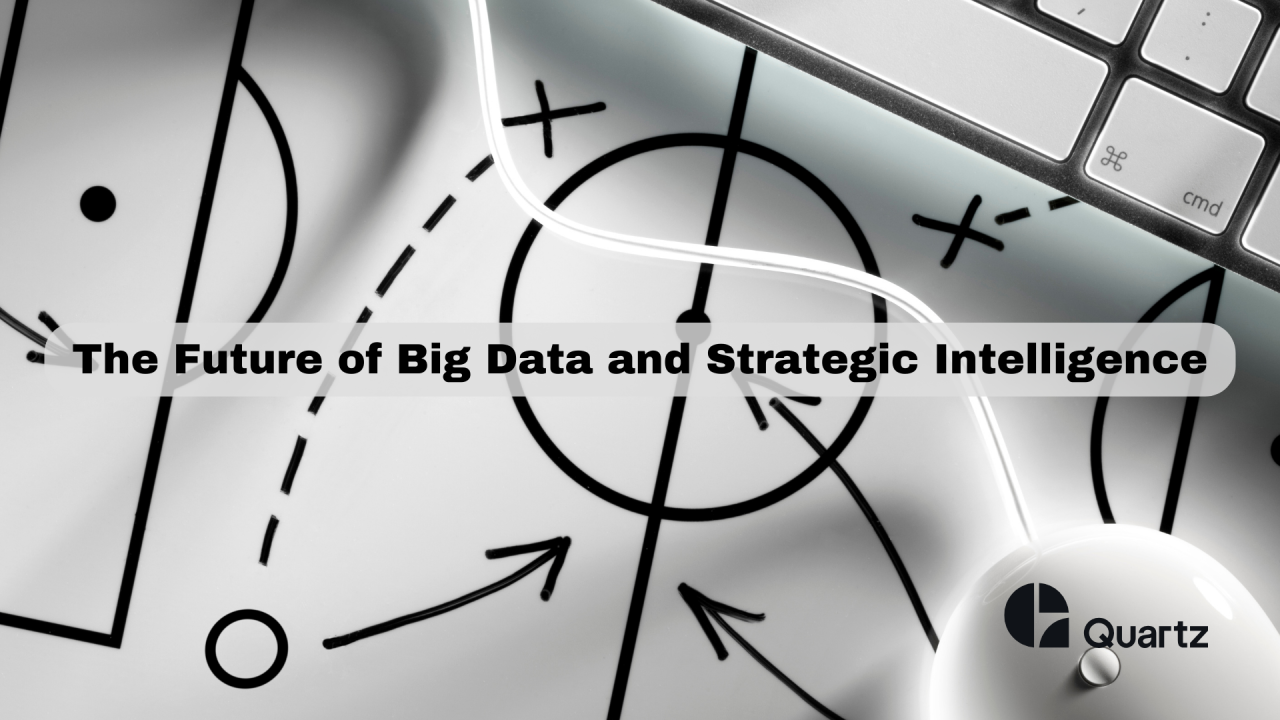The Future of Big Data and Strategic Intelligence
November 26, 2023
Business Intelligence

Businesses today face a deluge of data from various sources. How can they use this data to gain strategic insights and improve performance? This article explores the emerging trends and challenges of big data and strategic intelligence.
The Role of Data in Business Strategy
Data has always been important for business, but its volume and variety have increased dramatically in recent years. Technology has enabled companies to collect, store, and analyse more data than ever. Cloud computing, artificial intelligence, and machine learning have enhanced the capabilities and speed of data analysis.
Businesses use data analysis to gain insights into their operations, customers, markets, and competitors. These insights inform business strategy and planning. Data-driven decisions can improve efficiency, profitability, and innovation.
For example, retailers use data analysis to predict customer demand and optimise inventory. Healthcare providers use data analysis to improve patient outcomes and reduce costs. Financial firms use data analysis to assess risk and maximise returns.
Data is becoming an integral part of business strategy. Successful businesses create a data-driven culture where data analysis is embedded in every aspect of strategic planning and execution. This gives them a competitive edge in the market.
The Evolution of Data in Business
Data has long played a role in business, from simple accounting ledgers to today’s complex databases. Over time, technological advances have enabled companies to store and analyse exponentially more information. Desktop computers provided more data access than ever before. Now, cloud computing offers flexible, low-cost data storage and processing at a massive scale.
Software has evolved from basic spreadsheets to sophisticated business intelligence platforms. Dashboards give executives real-time visibility into operations. With more data and better analytical tools, the use of data-driven insights for strategic decisions has grown.
The application of artificial intelligence and machine learning has sped up this progress. AI can automate finding patterns in massive datasets. This transforms raw data into valuable, actionable information for strategy formulation.
The Power of Advanced Analytics
Innovative technologies are making advanced analytics central to business strategy. For example, predictive analytics use data and statistical modelling to forecast future outcomes. Real-time data analysis enables quick reactions to emerging trends or events.
Retailers are a prime example of using analytics to shape strategy. By analysing purchase history and browsing data, retailers can identify customer demand changes as they occur. They can then adjust merchandise planning to cater to emerging trends. This allows retailers to influence consumer behaviour rather than react to it.
The Convergence of Data and Strategy
Previously, business strategy was often planned independent of data analysis. Today, these capabilities are merging. More strategic decisions are based on data insights from techniques like predictive modelling.
For instance, healthcare providers analyse clinical data to determine treatments that offer the best patient outcomes. Financial firms assess risk in real-time to minimise loan exposure. Manufacturers optimise supply chains using IoT data from production facilities and logistics.
Data is becoming embedded into organisational strategy. Leading companies are creating data-driven cultures where analytics inform all strategic planning and execution. This integration of data and strategy delivers a tangible competitive advantage.
Overcoming Obstacles to Adoption
Despite its promise, strategically leveraging big data faces challenges. Ethical concerns exist regarding data privacy and responsible use. Accuracy and security issues can undermine data reliability and availability.
The specialised skills needed to manage and analyse big data are in short supply. Organisations must invest in talent development and training to build competency. They should establish clear data governance policies and prioritise ethics. With deliberate effort, we can overcome these hurdles to realise the full potential of a data-driven strategy.
A Roadmap for Implementation
Organisations can follow a roadmap to harness big data and strategic intelligence:
- Assess your data landscape. Catalogue existing data sources flows and analytical capabilities. Identify gaps.
- Define strategic goals. Determine high-level metrics and KPIs for success.
- Map data to strategy. Pinpoint data types and analytics methods that address strategic goals.
- Start small. Launch targeted pilots focused on specific business issues or opportunities.
- Build skills and capacity. Train employees. Establish data management procedures.
- Scale and expand. After early successes, expand efforts enterprise-wide.
- Iterate and adapt. Continue to evaluate performance and adjust strategies as needed.
Following these steps will drive maximum strategic value from data investments.
The Future of Big Data
Emerging trends like the Internet of Things (IoT) promise an explosion of data from interconnected devices and sensors. This data surge is driving more advanced analytics and artificial intelligence. Cloud computing provides the infrastructure to handle massive datasets.
Data visualisation is rapidly advancing. Interactive dashboards will allow decision-makers to engage with data and explore scenarios directly. Augmented analytics use AI to automate data preparation and analysis, making data insights accessible to every business user.
The possibilities for strategic use of big data will continue expanding across industries. Organisations need the talent, culture, and leadership to capitalise on the intersection of data and strategy fully.
Realising the Strategic Potential
Data is a powerful asset. Business leaders must embrace big data and analytics to infuse strategic decision-making with data-driven insights. Companies need the right tools, talent, and processes to harness their full potential.
Success requires changing organisational culture to become data-driven. Leadership must champion data literacy and analysis at all levels. Data and strategy must converge across the enterprise. With a commitment to continuous adaptation and improvement, companies can ride the crest of the data wave to new heights of strategic intelligence.
The data-centric future is here. Organisations that leverage big data strategically will gain a sustainable competitive advantage. Businesses must start their data-driven strategy journey today to lead their industries tomorrow.
